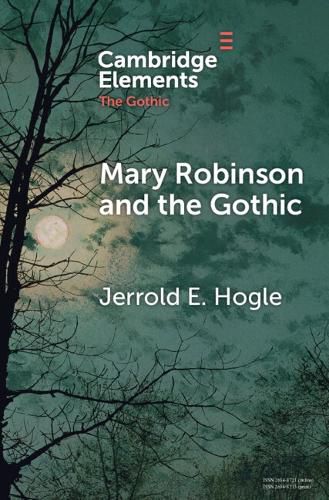Readings Newsletter
Become a Readings Member to make your shopping experience even easier.
Sign in or sign up for free!
You’re not far away from qualifying for FREE standard shipping within Australia
You’ve qualified for FREE standard shipping within Australia
The cart is loading…






Celebrated as an actress on the London stage (1776-80) and notorious as the mistress of the Prince of Wales (1779-80), Mary Darby Robinson had to write to support herself from the mid-1780s until her death in 1800. She mastered a wide range of styles, published prolifically, and became the poetry editor of the Morning Post. As her writing developed across the 1790s, she increasingly used the motifs of Gothic fiction and drama descended from Horace Walpole's Castle of Otranto (1764). These came to pervade her late novels and poems so much that she even wrote her autobiography as a Gothic romance. She also deployed them to critique the ideologies of male dominance and the forms of writing in which they appeared. This progression culminated in her final collection of verses, Lyrical Tales (1800), where she Gothically exposes the conflicted underpinnings in the now-famous Lyrical Ballads (1798) by Wordsworth and Coleridge.
$9.00 standard shipping within Australia
FREE standard shipping within Australia for orders over $100.00
Express & International shipping calculated at checkout
Celebrated as an actress on the London stage (1776-80) and notorious as the mistress of the Prince of Wales (1779-80), Mary Darby Robinson had to write to support herself from the mid-1780s until her death in 1800. She mastered a wide range of styles, published prolifically, and became the poetry editor of the Morning Post. As her writing developed across the 1790s, she increasingly used the motifs of Gothic fiction and drama descended from Horace Walpole's Castle of Otranto (1764). These came to pervade her late novels and poems so much that she even wrote her autobiography as a Gothic romance. She also deployed them to critique the ideologies of male dominance and the forms of writing in which they appeared. This progression culminated in her final collection of verses, Lyrical Tales (1800), where she Gothically exposes the conflicted underpinnings in the now-famous Lyrical Ballads (1798) by Wordsworth and Coleridge.